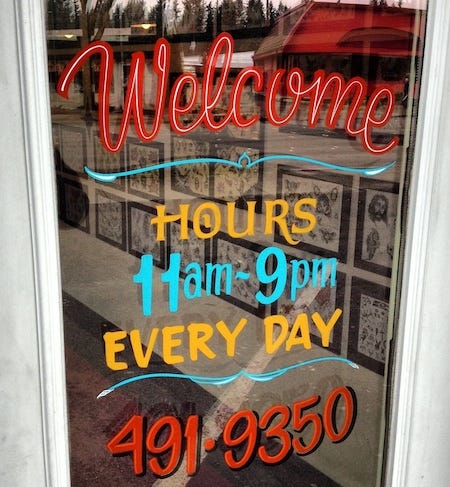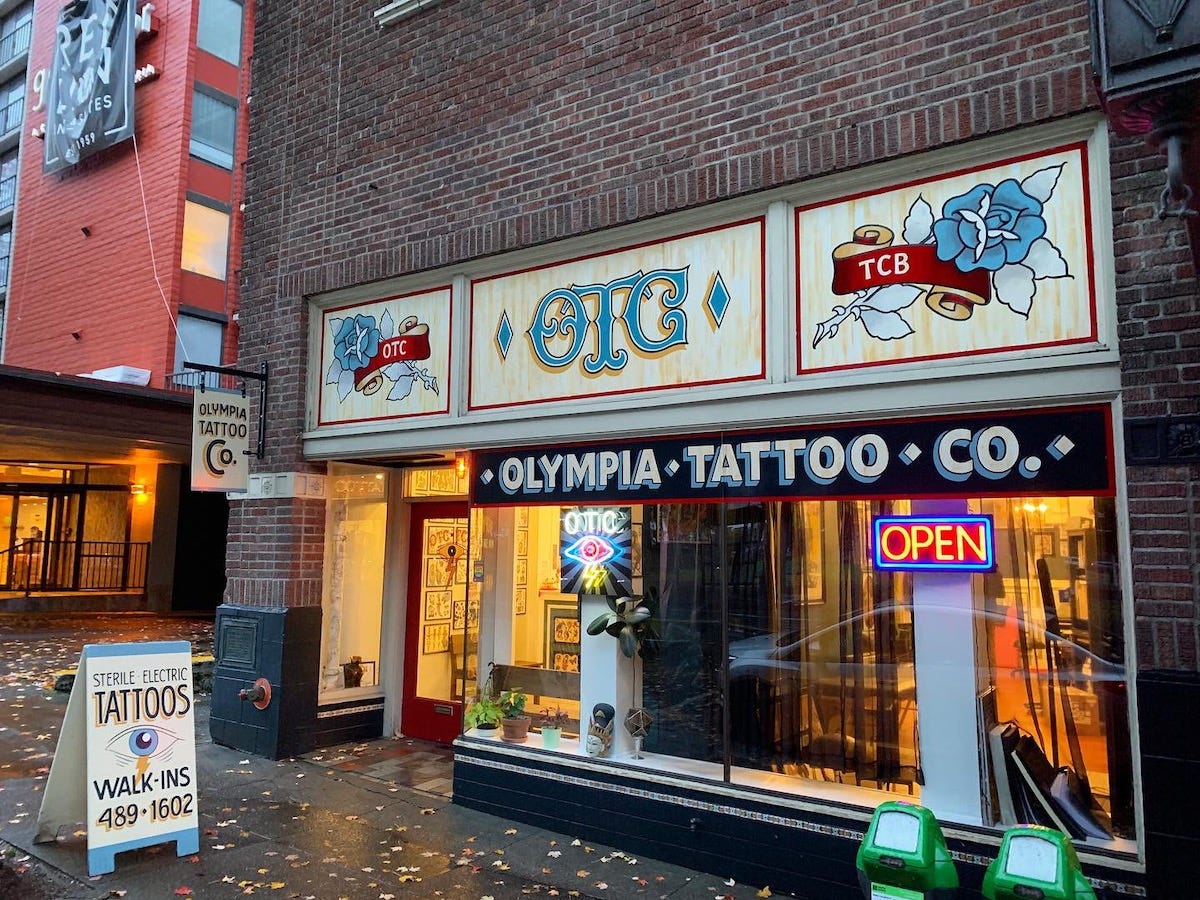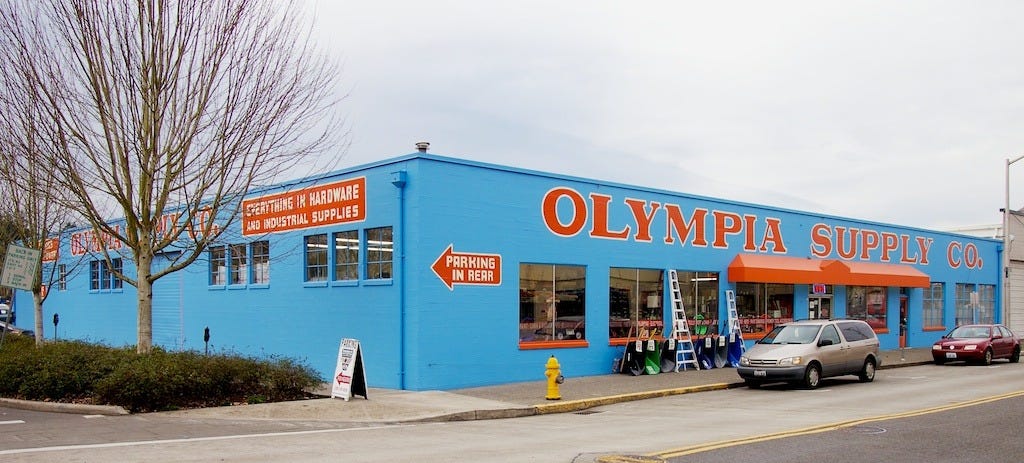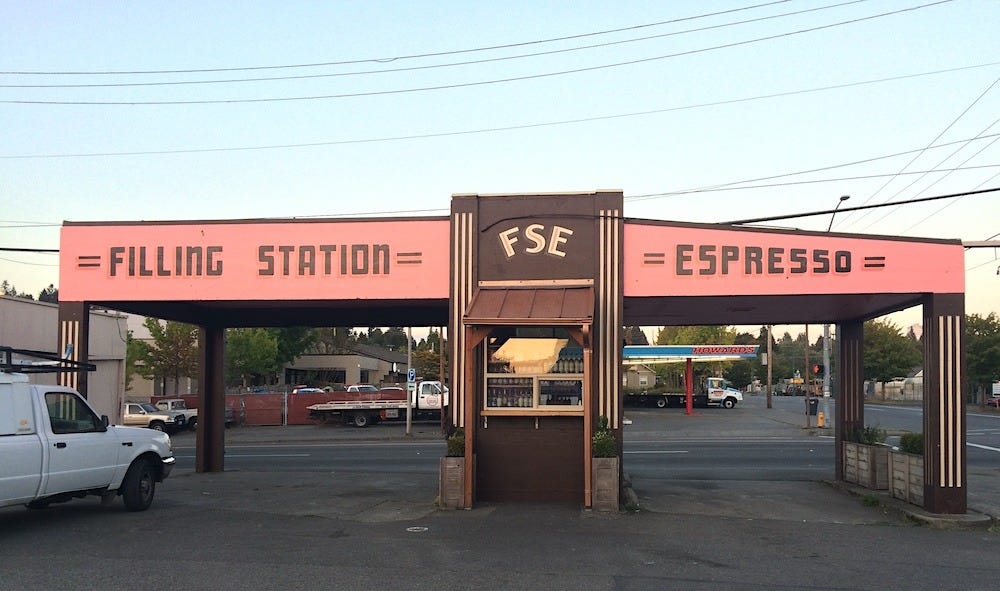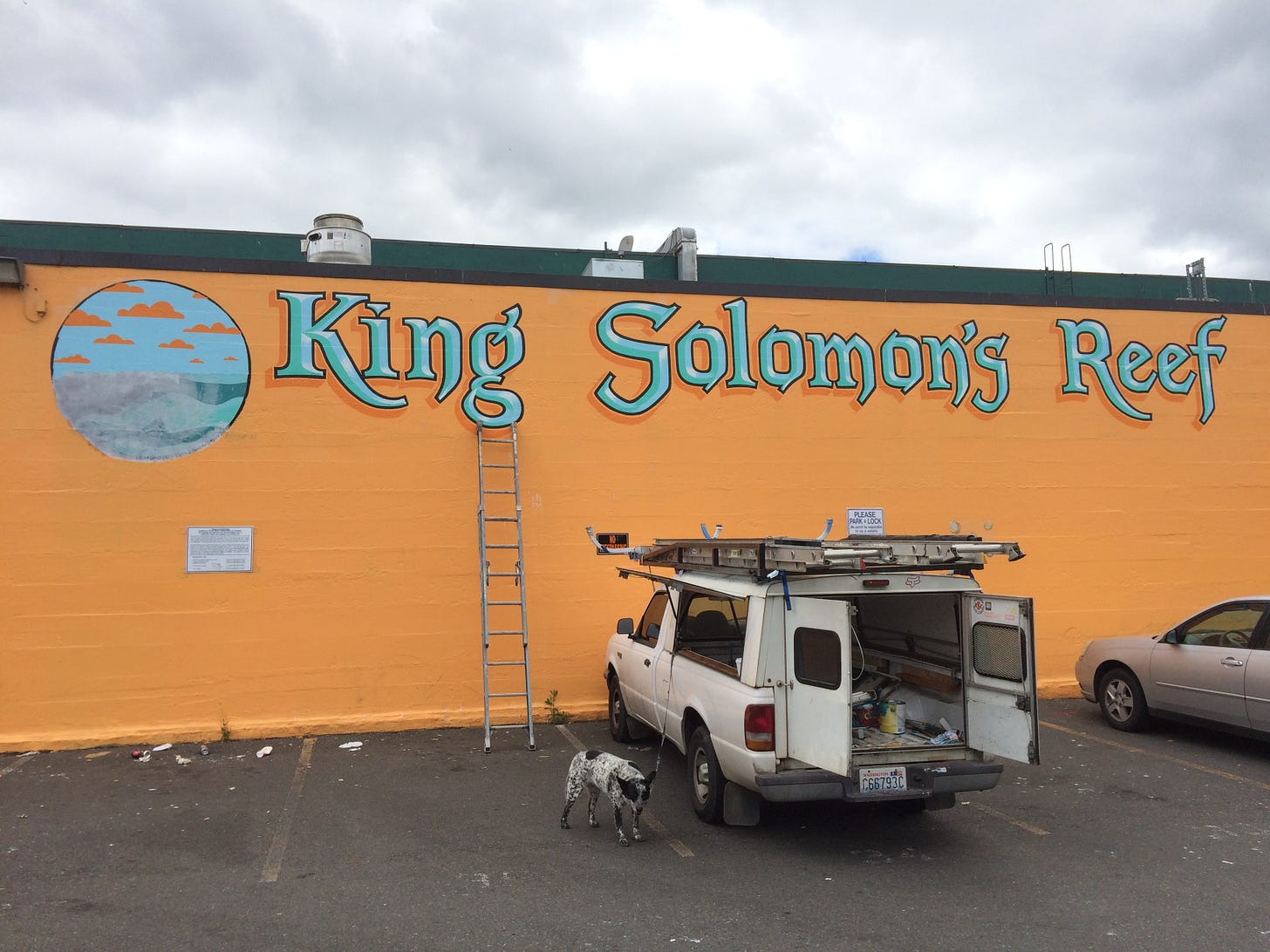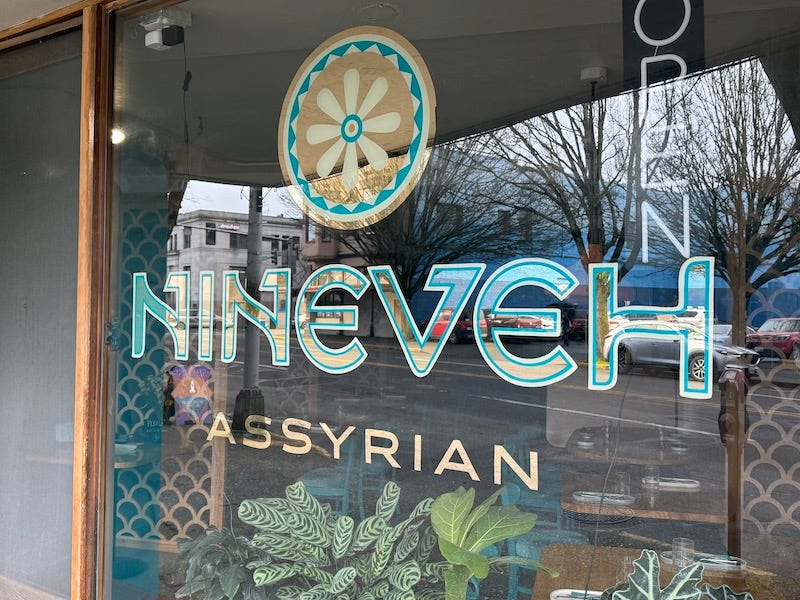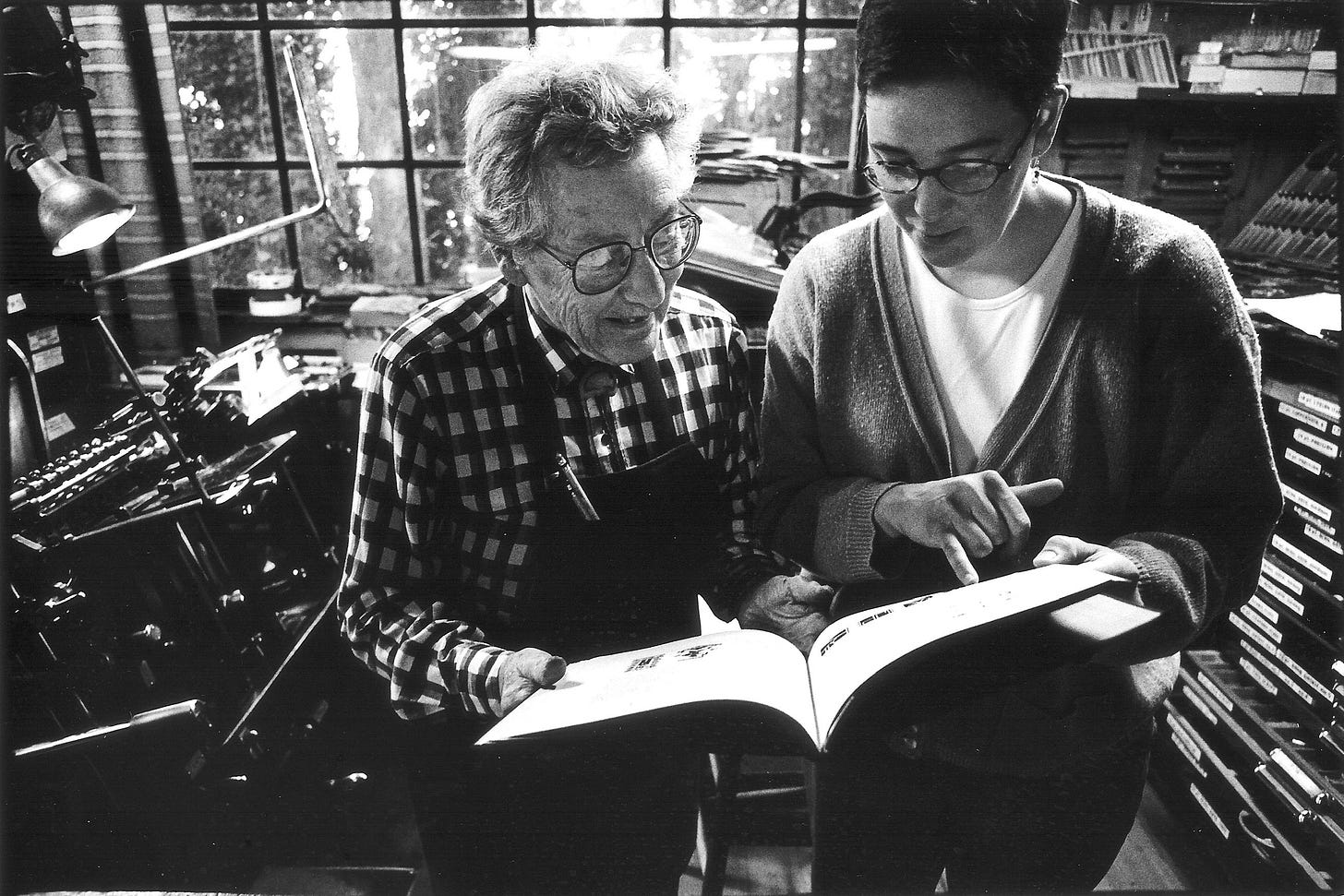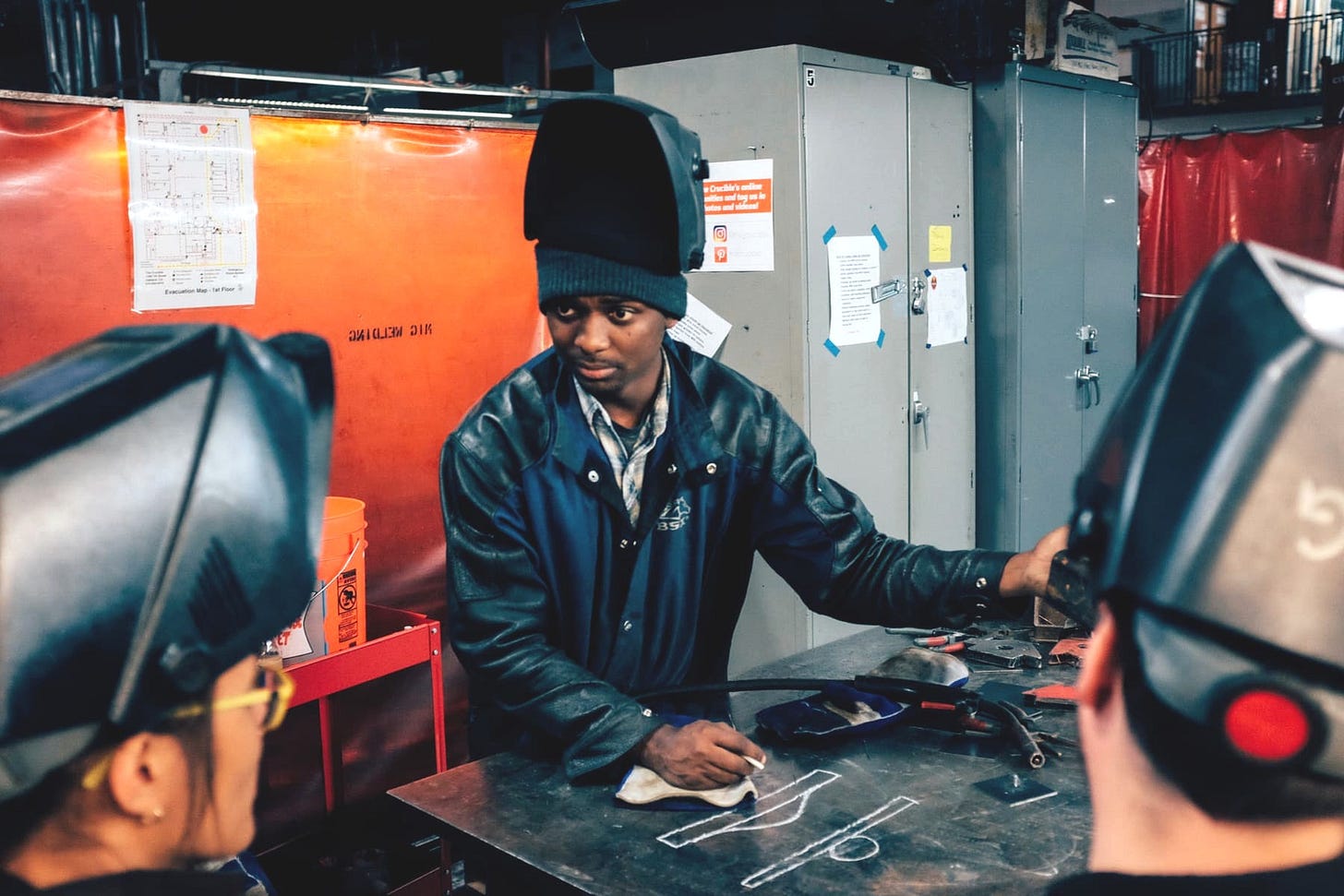A Hand-Painted Welcome: Ira Coyne's Lasting Imprint on Olympia
By the late 90s, digital printing was king and hand-painted signage—as well as apprenticeships for sign-painters—were fading fast from the American landscape. Ira Coyne didn't let that hold him back.
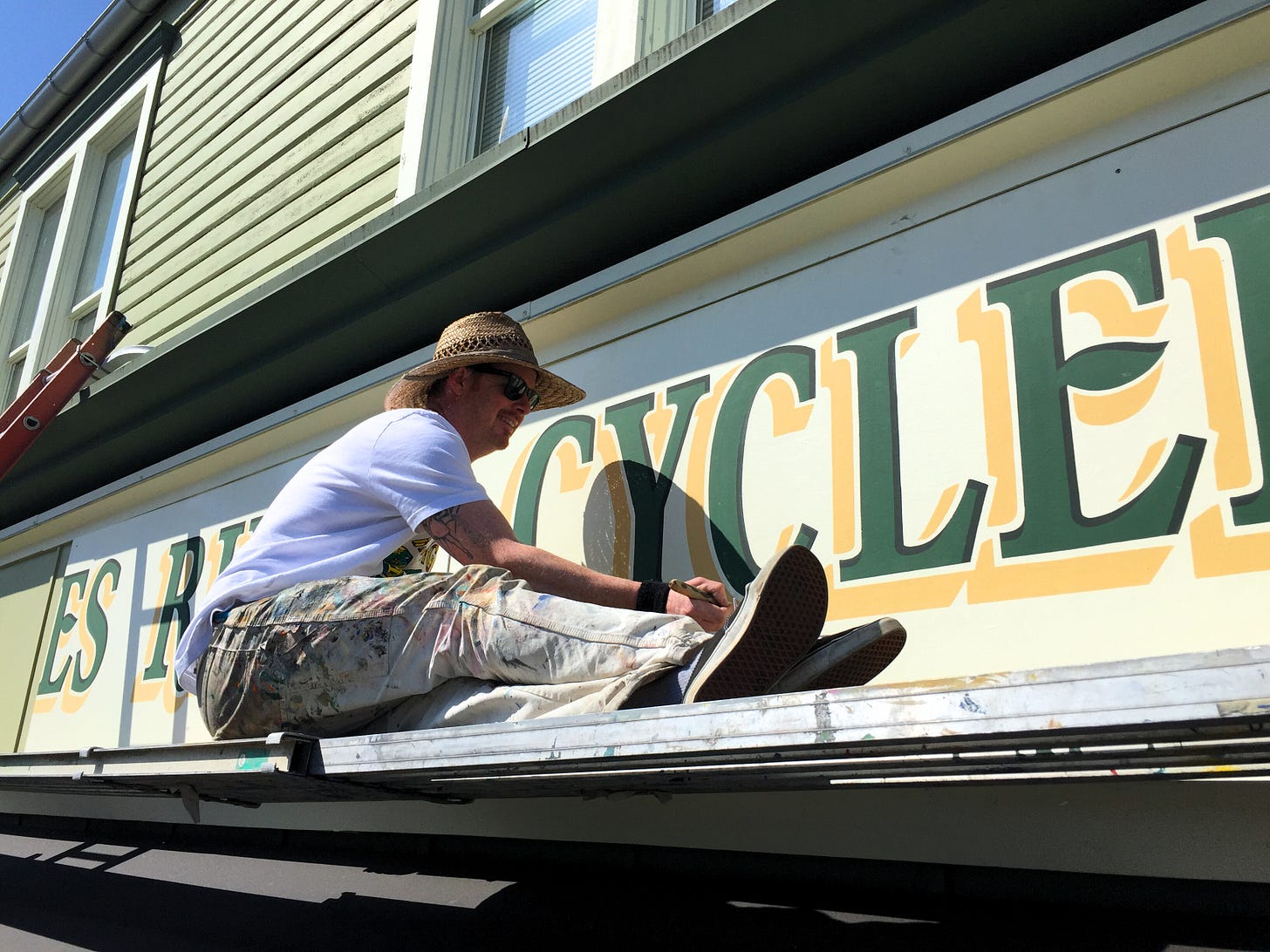
Dear Friends,
While we still have plenty of free material here on Substack and on our website, about half of our newest stories are now offered exclusively to paid subscribers. We’ve added quite a few new subscribers recently (welcome!), so we wanted to give you all a taste of what you’re missing behind the paywall by unlocking one of our short articles that was first published in mid-winter.
Today’s unlocked offering is
’s profile of sign-painter Ira Coyne, whose 25-year journey—and unorthodox mentorship by a local legend—illustrate the power of craftsmanship in preserving a community’s unique identity.“A Handpainted Welcome: Ira Coyne’s Lasting Imprint on Olympia” is now available to all, free of charge. However, if you can support our work with a paid subscription, not only will you have access to all of our premium offerings as soon as they’re released, but you’ll also be helping to publish future stories by Jennifer, and many other talented writers—all of whom are paid fair market rates for their work.
Thank you for reading and sharing our stories, and for being such a loyal part of the Craftsmanship community. The future of independent journalism depends on readers like you.
Sincerely,
Todd Oppenheimer
Publisher & Editor-in-Chief, Craftsmanship Magazine
A Hand-Painted Welcome: Ira Coyne’s Lasting Imprint on Olympia
Story by
When Ira Coyne first started hand-painting signs for Olympia’s local businesses in the late 90s, they were, in Coyne’s own words, “god-awful.”
“Sign-painting brushes have to be broken in, in a very specific way,” he explains. “The paints and solvents are an exact science. I had no idea how to use them, so I put paint in a bingo pen and was like, ‘Oh, this is fine, whatever.’”
Using this simple method, he made two signs—uncommissioned—for a popular bagel shop and presented them to the shop’s owner. The owner was thrilled, and Coyne told him he could keep them for $600.
Coyne wanted to improve his technique, so he pursued the mentorship of Vince Ryland, a prolific painter of signs, boats, cars, and many of Olympia’s beloved murals. Coyne says that over several years, he sought out Ryland and asked if he could “hang out and learn some stuff.” Each time he asked, Ryland would simply tell him, “Just keep doing what you’re doing.” Eventually, Coyne decided that if he wanted Ryland’s attention, he would have to offer something in return.
That “something” finally presented itself around 2006 or 2007, Coyne recalls. He had just rented an expansive new studio space when he ran into Ryland, who had been working out of an unheated shack. Coyne offered Ryland a key, and he “could see the wheels turning.” Ryland seemed to understand that accepting Coyne’s offer would mean taking him under his wing.
“Can I put my piano in there?” Ryland asked.
Once Ryland and his piano had moved in, Coyne had to give up his night-owl schedule. Ryland often started work at 5 a.m. and left the shop by 10, so if Coyne came in later, he missed the opportunity to learn.
“I had to make it an apprenticeship without announcing it. Get there early, clean the shop, mix up the paint, hand him the brush, attend to his needs.”
By treating apprenticeship as an act of service, Coyne was able to learn from a master, rather than the much slower route of trial-and-error.
When I ask Coyne where I can see Ryland’s work, he tells me to walk around the ports downtown. “There’s a flavor of comedy in his style. Once you start to see it, you realize you’ve been immersed. You’ll go around saying: ‘That’s him, that’s him, that’s him.’”
“That’s him,” is exactly what I’d told my son days before, as we walked through downtown Olympia identifying Coyne’s work. We started by Capitol Lake, where the bright blue Olympia Supply Company with its red block-lettering stood out in the foggy Pacific Northwest morning. Then we turned on Capitol Way, passing Capitol Florist and the Nom Nom Deli—neighboring businesses painted in contrasting palettes. From there, we could turn down any street and easily find Coyne’s work on sandwich boards, on hanging signs, in gold foil lettering in windows. That’s him at the library entrance; that’s him at the drive-through espresso stand; that’s him on the record shop window.
It's possible to walk around Olympia without consciously noticing Coyne’s mark, to take in the colors and hand-lettering without thinking about the person behind them, or the time he’s spent honing his craft. Still, one can’t escape their effect. As Coyne points out, “a hand-painted ‘Open’ sign is a person saying, ‘Open, welcome!’” A computer-generated sign can’t convey the same warmth.
Coyne’s favorite projects are the ones that develop as a client's business grows. When Rich Phillips took over the Reef, a classic Olympia diner, he asked Coyne to paint it a sherbet orange—a color that went against city regulations at the time. Coyne worked with both Phillips and Ryland, who had been painting the Reef for 30 years, to examine historical photos and imitate the lettering and waves that had graced the storefront decades earlier.
Coyne says, “I remember Rich being out there like, ‘This is going to be good for business.’ And it was, wow!”
The Reef has since changed hands several times, but the sherbet orange remains. As the business expanded, Coyne worked on the interior and painted directional signs, sandwich boards, even seasonal window decor. For Coyne, the Reef was an opportunity to create a “curated experience” of color and folk art for customers—and neighboring business owners took notice.
Coyne describes the synergy that often happens when he’s outside painting: “Everybody would come to talk. They'd get coffee, come over, and hang out. And I would be in sales mode, because I’ve got the paint in my hand and I’m wearing the whole outfit. And people would say, ‘How much to get my storefront done?’ And I'd say, ‘Well, give me 20 minutes and we'll sit down and talk.’”
Twice in our conversation, Coyne alluded to the children’s books by Richard Scarry in which illustrated animals perform human jobs: a raccoon milkman, two firefighter pigs, a farmer-goat on a tractor. Scarry’s imaginary “adult” world is both busy and playful—a world where everyone has a role, but also time to interact. As a sign-painter, Coyne has found that same sense of play and purpose.
Twenty-five years after he began making signs with bingo pens, Coyne’s style is not just recognizable, it’s masterful. One of his more recent projects, for Nineveh Assyrian Restaurant, features delicate gold leaf lettering, clearly executed with great artistry and skill. Yet the joy he brought to his earliest signs remains. Much of Coyne’s work, like Ryland’s—and Richard Scarry’s—has a “flavor of comedy”; just as often, it conveys a tender affection for detail.
ICYMI…
Vintage Machines, Perfect Prints: The Legacy of The Sherwood Press
Story by Jennifer Berney
To letterpress lovers, the Heidelberg Windmill is a beloved icon of beauty and durability. This historic print shop in Olympia, WA, is devoted to keeping its Windmills—and their flawless prints—alive.
Looking for an AI-Proof Career? The Trades are a Smart Choice.
Story by Todd Oppenheimer
While AI proceeds to decimate career paths, take heart: Not all jobs are at risk. Educators, and many others, are seeing the hands-on trades as skilled, high-paying careers that robots can’t replace.
Craftsmanship Magazine focuses on master artisans and innovators whose work informs our quest: to create a world built to last. In addition to our Substack offerings, you’ll find a rich archive of stories, podcasts, photo essays, and documentary shorts on our free website—along with community resources like our Artisans’ Directory, our guide to U.S.-based craft & folk schools, and much more.





